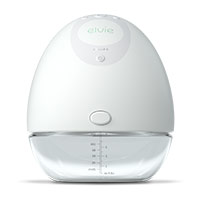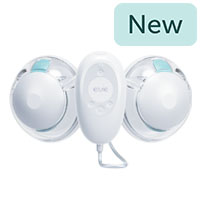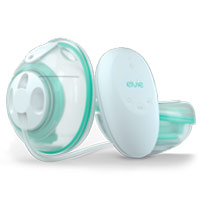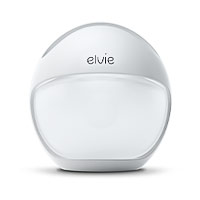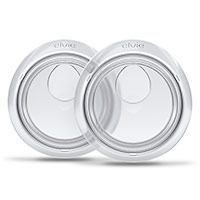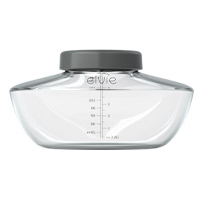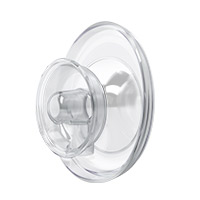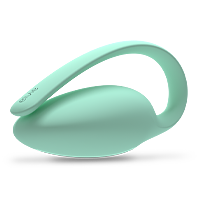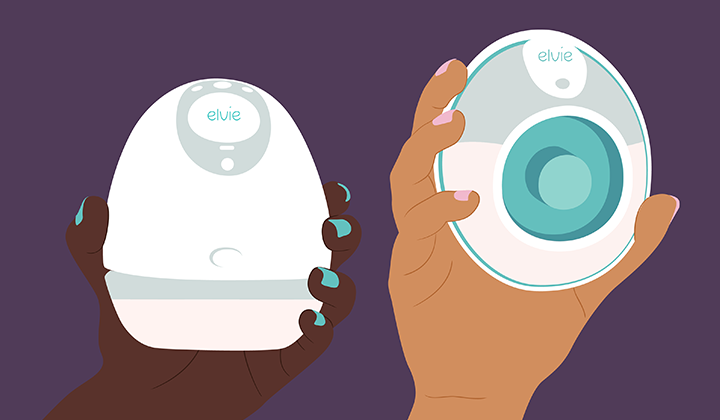This blog was reviewed by lactation consultant Olivia Hinge on 05/03/24
If you're a new mom, you may be interested in learning how to use a breast pump. Breast pumping can be a useful tool for providing milk for your baby when you are unable to or choose not to breastfeed directly. It can also help with maintaining your milk supply.
In this guide, we'll cover the basics of using a pump, along with useful tips and techniques to make sure you and your baby get the most out of your new breast pump.
How do breast pumps work?
Manual breast pumps are operated by hand, whereas an electric breast pump (such as Elvie Pump) is powered by a motor. In either case, the pump works by creating a vacuum that mimics the sucking motion of a baby breastfeeding. This stimulates the release of oxytocin and prolactin, which are the hormones responsible for milk production and the milk ejection reflex.
Both electric and manual breast pumps are handy for moms who need to be away from their babies for short periods of time, such as when returning to work or running errands. They can also be used to establish and maintain milk supply when a baby is unable to breastfeed due to medical reasons - or simply if you choose not to breastfeed for personal reasons.
How to use an electric breast pump
Ready to pump? Before starting, make sure you’re completely comfortable and have everything you need within reach, including a bottle or container for your milk, and a towel or breast pads to absorb any leaks. Individual breast pump instructions may differ so be sure to read the instruction manual for your pump thoroughly.
When you’re ready to begin, follow these steps to use your electric pump:
Wash your hands thoroughly with soap and water before handling the pump or any breast milk.
Assemble the pump according to the manufacturer's instructions. Make sure all parts are properly fitted and secure.
Position the breast shield over each nipple, making sure it fits snugly but not too tightly around the areolas.
Turn on the pump and adjust the suction and speed settings to your comfort level. It’s best to start with a lower suction and gradually increase as comfortable.
As the pump creates a vacuum, it will stimulate the release of milk. You should begin to see milk flow through the breast pump and into a bottle or container.
Once you’ve achieved 2 or 3 let downs, switch to the other breast and repeat the process.
Pump for around 30 minutes from both breasts together if possible (unless otherwise directed by a lactation and breastfeeding professional).
When you have finished expressing, turn off the pump and disassemble it according to the manufacturer's instructions. Rinse the breast pump parts — including the breast shield — with cold water and then wash them with hot, soapy water. Rinse again and allow the parts to air dry or pat them dry with a clean towel. It’s recommended (1) to sterilise your pump daily, either by boiling or with steam. The NHS recommends sterlising your pump after every use.
Store the expressed milk in the refrigerator or freezer, following proper storage guidelines.
How to properly pump breast milk
Regardless of the type of pump you choose, there are some universal tips that you can use to get the most out of your pumping time.
Many electric pumps have two settings: slow and fast. Try using the fast setting as soon as you start pumping (on a lower power) to help stimulate the breast into producing milk. Once you notice the first drops of breast milk begin to flow, feel free to switch to a slower setting. This gentler rhythm can be set to a stronger breast pump suction setting once you’re comfortable. When the milk flow begins to slow down, you can then speed things up a little — usually, this will trigger your breast into producing more milk.
Pump from both breasts at the same time, or pump from one breast while nursing from the other (this is easier with a hands-free pump). Studies show that overall yield increases with double pumping versus single pumping (2).
Getting some skin-to-skin contact with your baby before pumping may help to stimulate the hormones of breastmilk production and optimise output. If you’re unable to do this, try watching videos of your baby while pumping or smelling something of theirs.
Use the hands-on pumping technique. This technique has been shown to increase daily output by 48% in exclusively pumping mothers of preterm infants (3).
Warming flanges prior to pumping can speed up pumping sessions and increase your milk output (4).
The hands-on breast pumping technique
Whether you use an electric or manual breast pump, practicing the hands-on technique can help you provide breast milk for your baby in much larger volumes.
Double pump if possible. You can use a hands-free wearable pump or purchase or make a hands-free pumping bra by cutting holes into a sports bra or vest.
Use your hands to gently massage and compress the breast while pumping. Move all around the breasts including the edges, feeling for areas of firmness.
Move back and forth between breasts as you continue to pump.
Once the sprays slow right down and the milk is coming out as a trickle, remove the pump and massage again.
Then you can either hand express (remove the milk from your breasts by hand) or put the pump back on to get another let-down. Hand expressing at the end will increase the fat content of your milk.
The whole routine should take around 25-30 minutes. With practice, you will get a better understanding of what works best for you and your body.
How often to use a breast pump
Deciding when to pump really depends on your circumstances — every woman and person will respond differently to the same pump, and not every pumping schedule will suit every mother. For example, some users may need to pump more frequently to produce the same volume of breast milk as others.
As a rule of thumb, if you’re using your breast pump to fill multiple bottles, or to build a milk supply for when your maternity leave finishes, you’ll likely get a greater output if you pump in the morning.
For frequent pumping, it’s best to maintain a consistent routine. By using your breast pump at the same time each day, your body will slowly become attuned to your pumping sessions and produce more milk in anticipation of them.
For women and people who rely exclusively on breast pumping to feed their babies, it’s recommended to pump at least 8 times in 24 hours (5) for 30 minutes at a time while establishing and building a supply. This frequency can then be adjusted based on the volumes of milk needed once your baby is over 3 months old. It’s always beneficial to pump slightly more than your baby typically drinks, too.
Finally, if you nurse your baby when you’re at home but use a breast pump while you’re at work, your pumping schedule will need to be determined by several factors, such as:
The volume of milk your baby is likely to need while you’re both apart
Breast management — ensuring you are comfortable and pumping when your breasts feel full
Your work schedule — are there set times when you’re able to pump while at work? If so, plan around these times and consider using a discreet, hands-free pump such as Elvie.
How long are you supposed to pump for?
The length of each pumping session depends on a few factors, including your milk supply and your baby's feeding needs. Here are a few general guidelines to consider:
Establishing milk supply: In the early days after childbirth, it is important to stimulate milk production by breastfeeding or pumping frequently. The American Academy of Pediatrics recommends breastfeeding at least 8-12 times per day (6) for the first few weeks.
Maintaining milk supply: Once your milk supply is established, you may pump less frequently to maintain it. The frequency of pumping will depend on how much milk your baby needs and how well your milk supply is established.
It is important to remember that every woman's milk supply and breastfeeding needs are different. For further help with breast pumps, speak to your medical practitioner or a lactation consultant.
References
How to Keep Your Breast Pump Clean, CDC, February 2023
Prime, D.K., Garbin, C.P., Hartmann, P.E. and Kent, J.C. (2012). Simultaneous Breast Expression in Breastfeeding Women Is More Efficacious Than Sequential Breast Expression. Breastfeeding Medicine, 7(6), pp.442–447. doi:10.1089/bfm.2011.0139.
Morton J, Hall JY, Wong RJ, Thairu L, Benitz WE, Rhine WD . Combining hand techniques with electric pumping increases milk production in mothers of preterm infants. J Perinatol 2009; 29: 757–764.
Jacqueline C. Kent, DipEd, PhD, Donna T. Geddes, Postgrap Dip(Sci), DMU, PhD, Anna R. Hepworth, BSc(Hons), DipEd, and Peter E. Hartmann, PhD, Effect of Warm Breastshields on Breast Milk Pumping, International Lactation Consultant Association, November 2011
Sample Hospital Breastfeeding Policy for Newborns, American Academy of Pediatrics Section on Breastfeeding
Newborn and Infant Breastfeeding, American Academy of Pediatrics, May 2022


